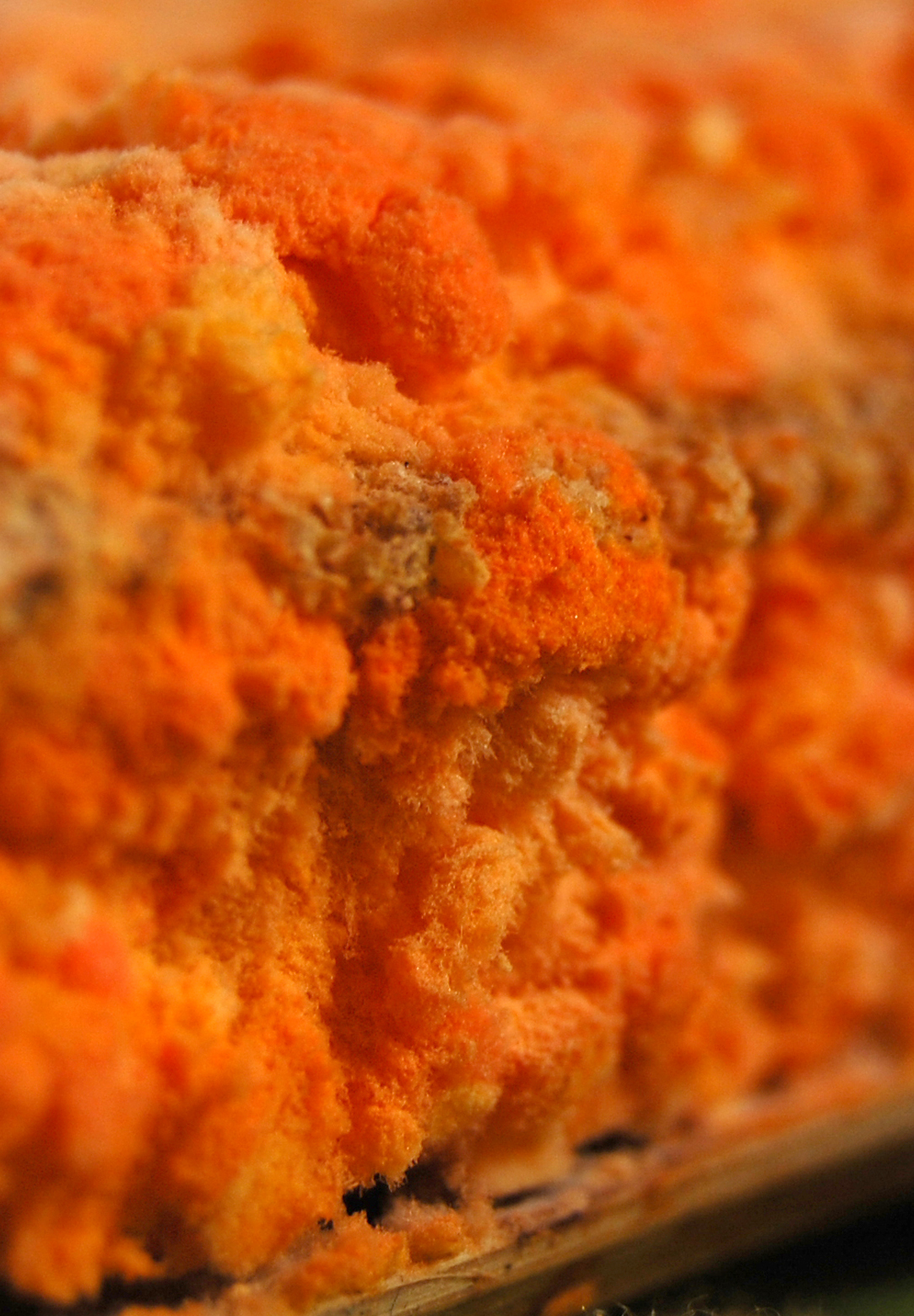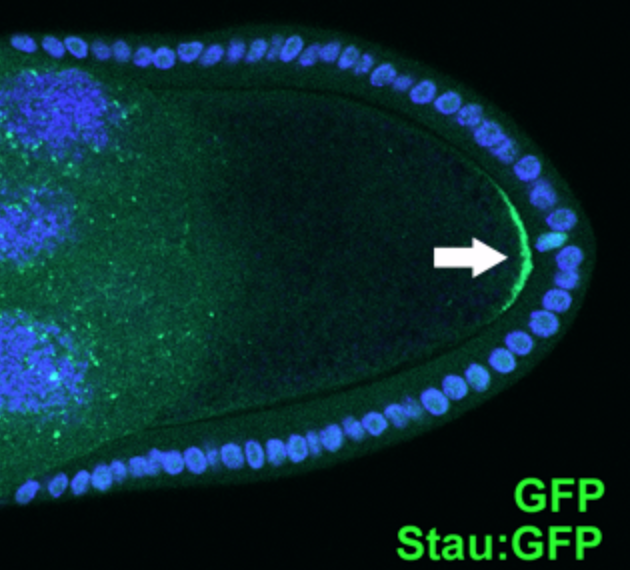|
Neurospora Crassa
''Neurospora crassa'' is a type of red bread mold of the phylum Ascomycota. The genus name, meaning "nerve spore" in Greek, refers to the characteristic striations on the spores. The first published account of this fungus was from an infestation of French bakeries in 1843. ''Neurospora crassa'' is used as a model organism because it is easy to grow and has a haploid life cycle that makes genetic analysis simple since recessive traits will show up in the offspring. Analysis of genetic recombination is facilitated by the ordered arrangement of the products of meiosis in ''Neurospora'' ascospores. Its entire genome of seven chromosomes has been sequenced. ''Neurospora'' was used by Edward Tatum and George Wells Beadle in their experiments for which they won the Nobel Prize in Physiology or Medicine in 1958. Beadle and Tatum exposed ''N. crassa'' to x-rays, causing mutations. They then observed failures in metabolic pathways caused by errors in specific enzymes. This led them to pr ... [...More Info...] [...Related Items...] OR: [Wikipedia] [Google] [Baidu] |
Cornelius Lott Shear
Cornelius Lott Shear (1865–1956) was an American mycologist and plant pathologist. In 1908 he created the American Phytopathological Society The American Phytopathological Society (APS) is an international scientific organization devoted to the study of plant diseases (phytopathology). APS promotes the advancement of modern concepts in the science of plant pathology and in plant heal .... He was the first to describe the grass '' Bromus arizonicus''. References American mycologists American phytopathologists 1865 births 1956 deaths University of Nebraska–Lincoln alumni {{mycologist-stub ... [...More Info...] [...Related Items...] OR: [Wikipedia] [Google] [Baidu] |
Norman Horowitz (geneticist)
Norman Harold Horowitz (March 19, 1915 – June 1, 2005) was a geneticist at Caltech who achieved national fame as the scientist who devised experiments to determine whether life might exist on Mars. His experiments were carried out by the Viking Lander of 1976, the first U.S. mission to successfully land an unmanned probe on the surface of Mars. Horowitz was a member of both the National Academy of Sciences and the American Academy of Arts and Sciences. In 1965 he began work with the Jet Propulsion Laboratory in Pasadena, serving for five years as chief of JPL’s bioscience section and as a member of the science teams for the Mariner and Viking missions to Mars. From 1977 to 1980, he was chairman of the biology division at Caltech. Since 2013, Horowitz has been listed on the Advisory Council of the National Center for Science Education. Among advocates of space exploration, he was noted for his opposition to a space program centered on the use of human astronauts. Charlene A ... [...More Info...] [...Related Items...] OR: [Wikipedia] [Google] [Baidu] |
Gene Conversion
Gene conversion is the process by which one DNA sequence replaces a homologous sequence such that the sequences become identical after the conversion event. Gene conversion can be either allelic, meaning that one allele of the same gene replaces another allele, or ectopic, meaning that one paralogous DNA sequence converts another. Allelic gene conversion Allelic gene conversion occurs during meiosis when homologous recombination between heterozygotic sites results in a mismatch in base pairing. This mismatch is then recognized and corrected by the cellular machinery causing one of the alleles to be converted to the other. This can cause non-Mendelian segregation of alleles in germ cells. Nonallelic/ectopic gene conversion Recombination occurs not only during meiosis, but also as a mechanism for repair of double-strand breaks (DSBs) caused by DNA damage. These DSBs are usually repaired using the sister chromatid of the broken duplex and not the homologous chromosome, so they wou ... [...More Info...] [...Related Items...] OR: [Wikipedia] [Google] [Baidu] |
Meiosis
Meiosis (; , since it is a reductional division) is a special type of cell division of germ cells in sexually-reproducing organisms that produces the gametes, such as sperm or egg cells. It involves two rounds of division that ultimately result in four cells with only one copy of each chromosome ( haploid). Additionally, prior to the division, genetic material from the paternal and maternal copies of each chromosome is crossed over, creating new combinations of code on each chromosome. Later on, during fertilisation, the haploid cells produced by meiosis from a male and female will fuse to create a cell with two copies of each chromosome again, the zygote. Errors in meiosis resulting in aneuploidy (an abnormal number of chromosomes) are the leading known cause of miscarriage and the most frequent genetic cause of developmental disabilities. In meiosis, DNA replication is followed by two rounds of cell division to produce four daughter cells, each with half the number ... [...More Info...] [...Related Items...] OR: [Wikipedia] [Google] [Baidu] |
Binucleated Cells
Binucleated cells are cells that contain two nuclei. This type of cell is most commonly found in cancer cells and may arise from a variety of causes. Binucleation can be easily visualized through staining and microscopy. In general, binucleation has negative effects on cell viability and subsequent mitosis. They also occur physiologically in hepatocytes, chondrocytes and in fungi ( dikaryon). Causes * Cleavage furrow regression: Cells divide and almost complete division but then the cleavage furrow begins to regress and the cells merge. This is thought to be caused by nondisjunction in chromosomes but the mechanism by which it occurs is not well understood. * Failed cytokinesis: The cell can fail to form a cleavage furrow, leading to both nuclei remaining in one cell. * Multipolar spindles: Cells contain three or more centrioles, resulting in multiple poles. This leads to the cells pulling chromosomes in many directions that end in multiple nuclei found in one cell. * ... [...More Info...] [...Related Items...] OR: [Wikipedia] [Google] [Baidu] |
Uninucleate
{{Short pages monitor ... [...More Info...] [...Related Items...] OR: [Wikipedia] [Google] [Baidu] |
Neurospora Crassa Life Cycle
''Neurospora'' is a genus of Ascomycete fungi. The genus name, meaning "nerve spore" refers to the characteristic striations on the spores that resemble axons. The best known species in this genus is ''Neurospora crassa'', a common model organism in biology. '' Neurospora intermedia'' var. ''oncomensis'' is believed to be the only mold belonging to ''Neurospora'' which is used in food production (to make oncom). Characteristics ''Neurospora'' species are molds with broadly spreading colonies, with abundant production of ascomata. Ascomata are superficial or immersed, perithecial and ostiolate or cleistothecial and non-ostiolate, hairy or glabrous, dark coloured. Peridium membranaceous, asci cylindrical, clavate or subspherical, with a persistent or evanescent wall, usually with a thickened and non-amyloid annular structure at the apex, usually 8-spored. Ascospores broadly fusiform, ellipsoidal, or nearly spherical, unicellular, hyaline to yellowish brown or olive-brown, bec ... [...More Info...] [...Related Items...] OR: [Wikipedia] [Google] [Baidu] |
Cell Fusion
Cell fusion is an important cellular process in which several uninucleate cells (cells with a single nucleus) combine to form a multinucleate cell, known as a syncytium. Cell fusion occurs during differentiation of myoblasts, osteoclasts and trophoblasts, during embryogenesis, and morphogenesis. Cell fusion is a necessary event in the maturation of cells so that they maintain their specific functions throughout growth. History In 1847 Theodore Schwann expanded upon the theory that all living organisms are composed of cells when he added to it that discrete cells are the basis of life. Schwann observed that in certain cells the walls and cavities of the cells coalesce together. It was this observation that provided the first hint that cells fuse. It was not until 1960 that cell biologists deliberately fused cells for the first time. To fuse the cells, biologists combined isolated mouse cells, with the same kind of tissue, and induced fusion of their outer membrane using the Sen ... [...More Info...] [...Related Items...] OR: [Wikipedia] [Google] [Baidu] |
Cell Polarity
Cell polarity refers to spatial differences in shape, structure, and function within a cell. Almost all cell types exhibit some form of polarity, which enables them to carry out specialized functions. Classical examples of polarized cells are described below, including epithelial cells with apical-basal polarity, neurons in which signals propagate in one direction from dendrites to axons, and migrating cells. Furthermore, cell polarity is important during many types of asymmetric cell division to set up functional asymmetries between daughter cells. Many of the key molecular players implicated in cell polarity are well conserved. For example, in metazoan cells, the PAR-3/PAR-6/aPKC complex plays a fundamental role in cell polarity. While the biochemical details may vary, some of the core principles such as negative and/or positive feedback between different molecules are common and essential to many known polarity systems. Examples of polarized cells Epithelial cells Epithe ... [...More Info...] [...Related Items...] OR: [Wikipedia] [Google] [Baidu] |
Gene Silencing
Gene silencing is the regulation of gene expression in a cell to prevent the expression of a certain gene. Gene silencing can occur during either Transcription (genetics), transcription or Translation (biology), translation and is often used in research. In particular, methods used to silence genes are being increasingly used to produce therapeutics to combat cancer and other diseases, such as infectious diseases and neurodegenerative disorders. Gene silencing is often considered the same as gene knockdown. When genes are silenced, their expression is reduced. In contrast, when genes are knocked out, they are completely erased from the organism's genome and, thus, have no expression. Gene silencing is considered a gene knockdown mechanism since the methods used to silence genes, such as RNAi, CRISPR, or siRNA, generally reduce the expression of a gene by at least 70% but do not eliminate it. Methods using gene silencing are often considered better than gene knockouts since they allo ... [...More Info...] [...Related Items...] OR: [Wikipedia] [Google] [Baidu] |
Epigenetics
In biology, epigenetics is the study of stable phenotypic changes (known as ''marks'') that do not involve alterations in the DNA sequence. The Greek prefix '' epi-'' ( "over, outside of, around") in ''epigenetics'' implies features that are "on top of" or "in addition to" the traditional genetic basis for inheritance. Epigenetics most often involves changes that affect the regulation of gene expression, but the term can also be used to describe any heritable phenotypic change. Such effects on cellular and physiological phenotypic traits may result from external or environmental factors, or be part of normal development. The term also refers to the mechanism of changes: functionally relevant alterations to the genome that do not involve mutation of the nucleotide sequence. Examples of mechanisms that produce such changes are DNA methylation and histone modification, each of which alters how genes are expressed without altering the underlying DNA sequence. Gene expressi ... [...More Info...] [...Related Items...] OR: [Wikipedia] [Google] [Baidu] |
Circadian
A circadian rhythm (), or circadian cycle, is a natural, internal process that regulates the sleep–wake cycle and repeats roughly every 24 hours. It can refer to any process that originates within an organism (i.e., endogenous) and responds to the environment ( entrained by the environment). These 24-hour rhythms are driven by a circadian clock, and they have been widely observed in animals, plants, fungi and cyanobacteria. The term ''circadian'' comes from the Latin '' circa'', meaning "approximately", and ''dies'', meaning "day". Processes with 24-hour cycles are more generally called diurnal rhythms; diurnal rhythms should not be called circadian rhythms unless they can be confirmed as endogenous, and not environmental. Although circadian rhythms are endogenous, they are adjusted to the local environment by external cues called zeitgebers (German for "time givers"), which include light, temperature and redox cycles. In clinical settings, an abnormal circadian rhythm in ... [...More Info...] [...Related Items...] OR: [Wikipedia] [Google] [Baidu] |







